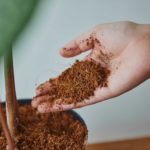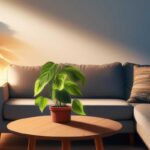Providing Humidity for Your Houseplants
Do you have houseplants that seem to curl up and wither away, or have problems with brown-leaf tips? If your indoor garden is ailing despite your best efforts, suspect an inappropriate humidity level.
Many houseplants originally came from jungles where the air is heavy with humidity. Most homes don’t replicate those conditions. Although many of these tropical descendants will survive in our parched indoor air, most do much better with a little extra moisture. A few need additional humidity to survive, such as anthurium, orchids, fittonia, many palms, African violet, ferns, philodendrons and spathiphyllum.
Houseplants suffer quickly from dry indoor air
Plants object quickly to low atmospheric humidity. At first, the leaves will yellow, or the edges or tips will brown. Leaf curling is another sign. Eventually, you’ll have a dramatic leaf drop, and the plant will finally collapse. Even if the overall humidity is OK, if a plant is sitting in the range of a heater or air-conditioning duct, it will suffer.
In general, houseplants require at least 45 percent humidity, and most homes don’t provide high enough levels. The humidity of your home depends on a variety of factors, such as where you live. Inland homes tend to be drier than those along the coast and near the bay. Heating and air conditioning also lower humidity.

(Healthy Houseplants.com)
Test the humidity in your indoor air with a hygrometer
You can test the humidity level of your home with a hygrometer (also called a humidistat or humidity meter), an instrument that measures moisture in the air. They can be found at some nurseries, hardware stores and through mail order. Get a good overall reading by testing the air in the room and then check the air right near the plant.
Providing humidity for indoor plants
There are ways to raise the humidity level of your home so that your plants are healthier and happier. The following methods can be used on their own or collectively, depending on the amount of humidity you’re trying to create. They will help you grow healthy houseplants.
- Mist: Although opinions vary on this topic, I’ve found that most houseplants — except for fuzzy-leafed ones such as African violets — like regular misting. Misting creates a humid atmosphere and lightly washes foliage, while also discouraging pests that like dry conditions, such as spider mites and thrips. Using tepid or room-temperature water (filtered or bottled is best), mist in the morning so plants have time to dry out before night. Misting should create a fine fog of moisture that surrounds and covers each plant. Leaves should look as if a light dew has settled on them. Some plants want daily misting; others are OK with two to three times a week.
- Humidity tray: Placing plants above water also provides them with moisture. Fill a waterproof plate or bowl with polished stones, pebbles or marbles. Use a tray or bowl made of metal, plastic, glass or glazed ceramic and not clay, which can “sweat” and damage surfaces. Add water to the container, stopping when the water level is just below the surface of the stones, pebbles or marbles. Place the plant on top of this, making sure that no water touches the bottom of the pot, as this can lead to root rot. Humidity created in the water below will rise to the plant.
- Group plants: When grouped, plants create a more humid environment for one another. Water evaporates from plant leaves during transpiration, which is the process by which plants cool off. This water vapor creates humidity around each transpiring plant. The more plants you put together, the more humidity they create for one another.
Try low-humidity lovers
If providing your plants with moisture seems like too much work, or you’re concerned about the humidity level in your home, try houseplants that like it dry. Plants that get by without extra moisture include succulents, such as kalanchoe and sansevieria, cactus, Dracaena marginata, fiddle leaf fig (Ficus lyrata), yucca, pothos, ponytail plant (Beaucarnea recurvata), cissus, peperomia, cast-iron plant, yucca, hoya and spider plant.





